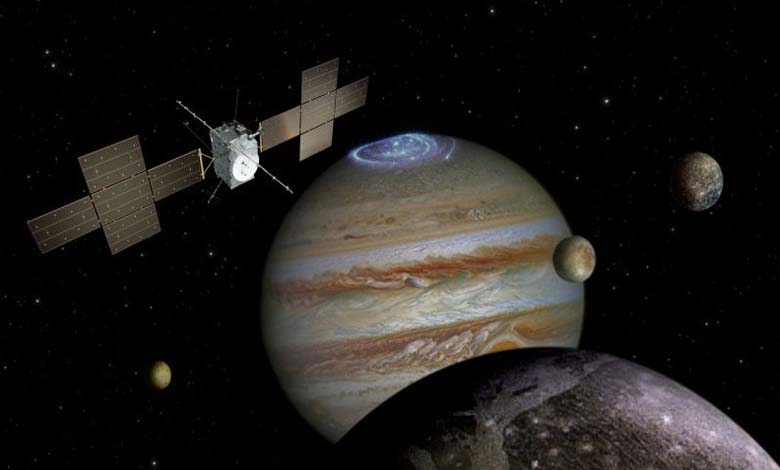“In Search of Life”… NASA to Launch Spacecraft to One of Jupiter’s Moons

The U.S. National Aeronautics and Space Administration (NASA) is preparing to launch a spacecraft to Europa, one of Jupiter’s moons, considered one of the most promising places in the search for life within our solar system.
-
The Penguin and the Egg: NASA Releases Stunning Images of Two Galaxies Merging
-
Due to Space Debris… An American Family Demands $80,000 from NASA
The mission will focus on determining whether the planet, which is covered in ice and believed to have a vast ocean beneath it, could support life, according to Reuters.
The Europa Clipper spacecraft, powered by solar energy, will be launched aboard the Falcon Heavy rocket from the Kennedy Space Center in Cape Canaveral, carrying nine scientific instruments.
The spacecraft is set to enter orbit around Jupiter in 2030, after traveling a distance of 2.9 billion kilometers on a journey that will take about five and a half years.
-
’17 Potentially Habitable Planets’… NASA reveals a new surprise
-
No travel before 2025.. NASA surprises astronauts with shocking
The launch of the spacecraft was delayed due to Hurricane Milton, but NASA has tentatively scheduled the launch for 16:06 GMT tomorrow, Monday.
Scientists have shown great interest in the salty ocean that previous studies suggest lies beneath Europa’s icy shell.
Bonnie Buratti, a planetary scientist at NASA’s Jet Propulsion Laboratory and deputy chief scientist for the mission, said, “There is very strong evidence that the building blocks for life are present on Europa. But we need to go there to find out.”
-
Humanity is in danger… NASA sets the date for the collision of the “Lost Asteroid” with Earth
-
NASA Telescopes Begin the Year by Monitoring a Double Explosion
She added, “I want to emphasize that we are not a mission to discover life, we are only looking for conditions suitable for life.”
Europa Clipper is the largest spacecraft ever built by NASA for planetary missions. It measures 30.5 meters in length, 17.6 meters in width, and weighs around 6,000 kilograms.
The spacecraft has three main objectives: to measure the thickness of Europa’s outer ice layer and its interactions with its interior, determine the moon’s composition, and identify its geological features.












